It looks like you're using an Ad Blocker.
Please white-list or disable AboveTopSecret.com in your ad-blocking tool.
Thank you.
Some features of ATS will be disabled while you continue to use an ad-blocker.
share:
The Mysterious Disappearance of Jimmy Hoffa
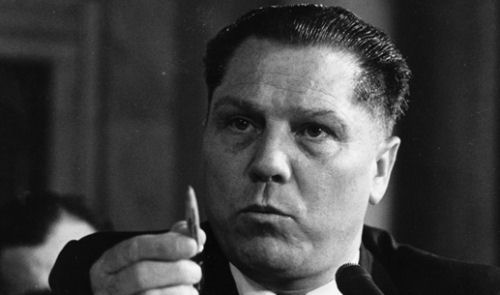
What really happened to Jimmy Hoffa? Well, today no one really seems to know still, despite his disappearance taking place on the 30th of July, 1975, and after a relatively large police hunt for his body. A hunt that we know proved to be a failure as any trace of him is yet to have been found. Hoffa officially being declared dead on the 30th of July, 1982, the 7 year anniversary of when his disappearance was first reported.
Of course due to the mere nature of a disappearance of such a well known and popular figure like Hoffa was at the time, speculation, wild 'out there theories' and rumours are always going to find their way into the case at some point, and this case is certainly no different.
On ATS alone past thread’s have argued that Alien abduction was the reason for his disappearance, other popular claims made by theorists of the case claim his body was mutilated and then quite literally mixed into the concrete of Giants stadium, Hoffa being built right into the foundations. Some, albeit a small few, even seem to believe he’s alive somewhere today, previously deciding to, for whatever reason, abandon his family and escape the fame he had gained in his prime.
Well, who knows for sure really? I mean I certainly don't. But this is AboveTopSecret.com and the disappearance of Hoffa is a genuine mystery today still and It has remained one from the day it came about thus the need for a discussion of sorts and thus why I've decided to open this thread here. It truly is an interesting case of disappearance after all and I'd like to throw out some of my own ideas and theories on the subject for discussion, ones hopefully looking to find the very real reason why Hoffa suddenly vanished without a trace on the 30th of July, 1975.
However, before I do discuss some of the conspiracy angles related to this case, some of my own ideas and some ideas of other researchers, please let me explain how Hoffa, the man once hailed as "America's most powerful labour leader", came to gain his fame in the first place, this being the very reason why we know of his somewhat mysterious disappearance today..
How Hoffa Came To Be..
James Riddle Hoffa was born in 1913 on the 14th of February in Indiana, although growing up in Detroit with a family without a father, one who had passed away when Hoffa was just 7 years old. When he was 14 however, and still living in Detroit where he lived for most of his life, he decided to drop out of school and pursue full time work to help support his already financially challenged family, ending up finding it as a local store stock boy at the time. In 1932 however, when he was around 19 the young, charismatic Hoffa helped lead a strike at the Grocery store where he was working.. This seemingly small act of defiance quite literally shaped who this man would be for the rest of his life.
The position gave relatively good wages for the time, but working conditions were said to be poor.. at best. Due to this the workers tried to organize a union, and in doing so the young Hoffa was handed the leadership role due to his suitability and passion he'd repeatedly shown for their cause. Of course though, he was eventually dismissed from his working position, still 19 at the time. Hoffa then went onto become quite heavily involved with Local 299 of the Teamsters union in Detroit, I believe at their request.
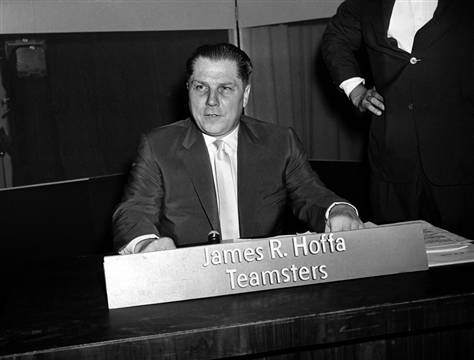
His influence with the Teamsters was incredible. By the time he became involved the membership number was at approximately 75,000 members but a mere 3 years later, due to the work from Hoffa and his influence, there was 170,000 members. 3 more years later and the membership grew to 420,000 and it showed no signs of slowing down, particularly through the World War 2 years as by 1951 they topped 1 million members.
(Source)
The Teamsters union, founded in 1903, had only 75,000 members in 1933. As a result of Hoffa's work with other union leaders to consolidate local union trucker groups into regional sections and then into one gigantic national body—work that Hoffa ultimately completed over a period of two decades—membership grew to 170,000 members by 1936. Three years later, there were 420,000; and the number grew steadily during World War II and through the post-war boom to top a million members by 1951.
The Teamsters organized truck drivers and warehousemen, first throughout the Midwest, and then nationwide. Hoffa played a major role in the union's skillful use of "quickie strikes", secondary boycotts, and other means of leveraging union strength at one company, to then move to organize workers, and finally to win contract demands at other companies. This process, which took several years from the early 1930s, eventually brought the Teamsters to a position of being one of the most powerful unions in the United States.
By the age of 37, Hoffa's work with the Union was to be repaid as he was made chairman of the Central States Drivers Council in 1940, despite never holding such a working position personally, and two years later he was elected president of the Michigan Conference of Teamsters. Shortly afterwards he was handed the position of vice president of the Teamsters Union by Dave Beck, the current president of the organisation.
Hoffa Vs Bobby Kennedy
In 1956 however things started to turn sour as allegations were being thrown around about the Union's claimed "legal activities", accusations primarily centered on money and the mafia. A war had been waged on the now so powerful union and as a result Union leader Dave Beck not only faced charges, but also faced prison. Bad news for all involved.. expect a select few, including the Vice-President, Jimmy Hoffa.
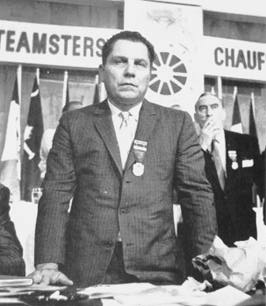
(Source)
Allegations were made in 1956 that the leadership of the union was involved in illegal activities. The Select Committee on Labour, that included Joe McCarthy, Barry Goldwater, Karl Mundt and John F. Kennedy, decided that these charges needed to be investigated.
Robert Kennedy, chief counsel of the committee, was instructed to collect information and discovered several financial irregularities. This included taking $85,119 between 1949 and 1953 from union funds to pay his own personal bill. The investigation also revealed that a Seattle builder had received $196,516 out of union funds to pay for work done on Beck's home. The investigations were televised and Kennedy's questioning turned him into a national political figure.
Beck was eventually imprisoned for five years
In some of these televised investigations Bobby Kennedy did something which was unheard of.. he named names, “All of our lives are too intricately interwoven with this union to sit passively by and allow the Teamsters under Mr. Hoffa’s leadership to create such a superpower in this country - a power greater than the people and greater than the Government... Unless something is done, this country is not going to be controlled by the people but is going to be controlled by Johnny Dio and Jimmy Hoffa and Tony ‘Ducks’ Corallo.”
Hoffa being the only non-mafia connected name he mentioned - although he certainly did have mafia connections as did the union. But Bobby Kennedy practically made it personal with what he said about Hoffa, especially with so publicly connecting him with organized crime in such a way, but Hoffa was more than happy to return the favour:
(Source)
Hoffa had always been a brawler and a bully who would use any means necessary to achieve his goals for the Teamsters. When he and Kennedy locked horns in the public arena, Hoffa, as was his way, insisted on making it personal, ridiculing Kennedy and calling him a “boy.” When the two men first met at a Washington dinner party, Hoffa had actually challenged Kennedy to an arm- wrestling contest and the next day publicly proclaimed victory. On another occasion at a restaurant, Hoffa initiated a shoving match with Kennedy because he felt that the young attorney had snubbed him. Kennedy was everything Hoffa loathed—born into money, Ivy League-educated, refined and good-looking—but in Hoffa’s estimation Kennedy fell short because he didn’t live up to Hoffa’s standards for manhood.
This committee investigating the Unions activities, often referred to as the McClellan Committee named after its chairman, Senator John L. McClellan, was just relentless in It's pursuit of finding out information about the key players of the Union, and their alleged Illegal activities such as laundering money or conspiring with the powerful mafia in order to bully others and achieve exactly what they wanted to achieve, when they wanted it. With Beck, the previous president now in jail though, the new President, Jimmy Hoffa, would firmly be placed in the spotlight.
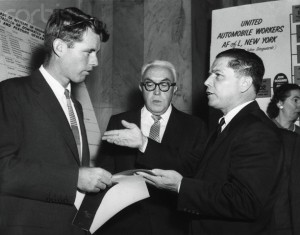
Kennedy in particular wanted him jailed also, perhaps more than anyone else and he was determined to get him there - Hoffa and Kennedy growing to literally hate and despise each other, particularly as Kennedy was just relentless in pursuing him.
It's claimed in Hoffa's own words regarding the mobs involvement with the union,
“All these [SNIPPED] critics keep saying we’re connected to the mob. Let me tell you something, Frank. Without them the Teamsters wouldn’t be where we are today. I couldn’t have done it without them… I decided to use the mob and they’ve used me. But I’ve used them for the benefit of rank and file and I believe I’ve used them more than they’ve used me. Chrissakes, anybody thinks you can run a [SNIPPED] union like the Teamsters without the help of the mob has got to be stupid.” - Jimmy Hoffa -
In Kennedy's pursuit of jailing Hoffa, he went onto claim that he had misappropriated $9.5 million in union funds, had corruptly done deals with employers, used the mafia and so on. Eventually however, Hoffa was found not guilty thanks to the help of Edward Bennett Williams, his lawyer. George Meany, president of the AFL-CIO, did not agree with the verdict though thus Hoffa and the Teamsters Union were expelled from the association.
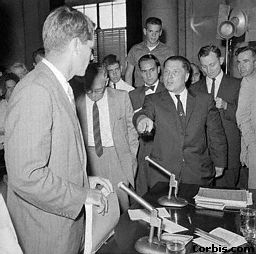
Hoffa was still very popular though, he's even seen as a hugely popular figure today in fact, and he achieved a re-election as President in 1960. It looked like a really great thing for Hoffa, after all, how could it not be? Well, unfortunately for him John F. Kennedy was also looking for a Presidency.. albeit for for the United States of America, a position he achieved and in 1961 he was inaugurated, but he also brought his brother, Bobby, in as Attorney General and this time he would have the full might of the Unites States government behind him to finally take on Hoffa and place him where he believed he belonged.. jail and facing punishment for the crimes he had previously committed. A feat finally achieved in 1964..
(Source)
A long-term supporter of the Republican Party, Hoffa was a generous supplier of funds to Richard Nixon in his presidential struggle with John F. Kennedy. During the campaign, Robert Kennedy sent Hoffa a copy of his book, The Enemy Within. Kennedy wrote inside: "To Jimmy. I'm sending you this book so you won't have to use union funds to buy one. Bobby."
After Kennedy's election victory in 1960 he appointed Robert Kennedy as his attorney general. Once in office, Kennedy resumed his investigations into Hoffa's activities. Hoffa was eventually charged with taking money from the union's $300 Pension Fund. J. Edgar Hoover, a long-term opponent of the Kennedys, passed FBI files on the attorney general to Roy Cohn, who in turn gave them to Hoffa. However, Hoffa, who disapproved of the Kennedy's adulterous behaviour, declined to use this material against his prosecutors.
A former official of the union, E. G. Partin, was in prison facing charges of kidnapping, murder, robbery and rape, agreed to do a deal with the authorities and provide evidence against Hoffa. At the first trial at Nashville in October, 1962, the hung jury voted 7-5 for acquittal. The judge, believing that Hoffa's team were guilty of jury tampering, called a mistrial. At the second trial at Chattanooga in January, 1964, Hoffa was found guilty and sentenced to eight years in prison.
Jimmy Hoffa, Labour leader, was finally in jail thanks to the work of Bobby Kennedy. While in jail though the game, so to speak, changed. Hoffa was receiving a great deal of support through cards, and even on valentine’s day, for his birthday, a plane flew over the prison with a sign wishing him happy birthday, but the man Hoffa appointed the new president, Frank Fitzsimmons, was much more popular than he could ever hope to be, particularly with the mob, organized crime and even the man who would become President; Richard Nixon. Hoffa wanted his old Presidency position back, but it seems no one wanted him.
edit on 21-11-2011 by Rising Against because: (no reason given)
The Disappearance of Hoffa
2 days before Christmas in 1971, Richard Nixon made what I can only describe as a political move - he pardoned the incarcerated, and still very popular figure of the people, Jimmy Hoffa from jail, allowing him to spend this Christmas with his family for the first time since being jailed by Bobby Kennedy some years previously. Why did he choose to pardon Hoffa? Who knows, although rumors say that Nixon received rather large sums of illegal campaign donations from the teamsters union, this according to multiple sources. Hoffa was also already a well known supporter of Nixon and he had campaigned for him in the race for the 1961 Election, which John F. Kennedy, one of his "enemies", won.
On July 30, 1975 however, a few years after being pardoned, former Teamsters President Jimmy Hoffa stood alone outside a Restaurant in Bloomfield Township, Michigan wearing his dark blue short-sleeve shirt, blue pants, white socks, and black Gucci loafers. He was waiting for Detroit mobster Anthony “Tony Jack” Giacalone and New Jersey labor leader Anthony “Tony Pro” Provenzano, old friends one could say. But, they didn't arrive on time which noticeably angered Hoffa. Due to the late arrival the annoyed Hoffa walked over to a nearby payphone and called his wife, obviously not realizing at the time that this would be the last time they would ever speak.
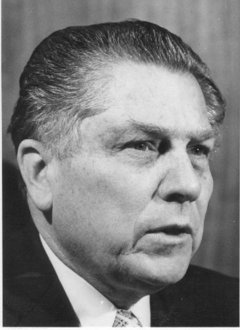
According to many sources that I can find the meeting between them was to discuss Hoffa's potential candidacy for the Presidency of the International Brotherhood of Teamsters, the position he had previously held - of course though, as like I previously mentioned, Fitzsimmons was by far more popular, particularly with the mobsters of the time, like Giacalone and Provenzano perhaps.
It wasn't long after the phone call Hoffa had made to his wife that a car finally turned up for him though, and it seemingly picked him up although I can't find any reports of anyone seeing him get into the car itself, only reports of him inside the car once it was leaving the restaurant car park:
(Source)
Not long after Hoffa had called home on the pay phone outside the hardware store, a maroon 1975 Mercury Marquis Brougham pulled out of the restaurant parking lot and nearly hit a truck. The truck driver, who was making deliveries in the area, pulled up next to the car and immediately recognized Jimmy Hoffa sitting in the backseat behind the car’s driver. The truck driver also noticed a long object covered with a gray blanket on the seat between Hoffa and another passenger. The truck driver thought it was a shotgun or a rifle. He didn’t get a good look at anyone else in the car..
The next day Hoffa’s green 1974 Pontiac Grand Ville was found unlocked in the restaurant parking lot. Police opened the trunk but found nothing unusual. Using the truck driver’s description of the car Hoffa was last seen in, investigators were able to trace the maroon Mercury to its owner, Joe Giacalone, the son of mobster Anthony Giacalone. Joe Giacalone claimed that he had lent the car to a friend that day, a teamster named Charles “Chuckie” O’Brien, who was very close to the Hoffa family and had actually lived with the Hoffas at one time. The car was located, and O’Brien’s fingerprints were found on a 7UP bottle and a piece of paper recovered from the car. Investigators felt that Jimmy Hoffa would have felt comfortable enough with O’Brien, whom he considered a foster son, to get into the Mercury.
Was he forced into the car? Did he go willingly? Was the truck driver telling the truth? Who knows. But this was seemingly the last ever sighting of Jimmy Hoffa. He mysteriously vanished, his body never being found. But what happened exactly?
Well, according to sources the FBI checked up on the exact whereabouts of the men Hoffa was supposed to meet that day, Anthony Giacalone and Anthony Provenzano, both of which being able to provide alibis. Giacalone for example was at a local gym where he spent at least some time every single day, and Provenzano was said to be in New Jersey. Both claimed that they had no idea they were supposed to have lunch with Hoffa at the time he disappeared.
Another character of suspicion was Charles 'Chuckie' O’Brien, someone who knew Hoffa very well, and who was, at the time of Hoffa's disappearance, is said to have been lending the car that Hoffa was last seen in - lending it from Joe Giacalone, the son of Mobster Anthony Giacalone who was supposed to meet Hoffa in the first place, but claiming otherwise. O'Brien being someone Hoffa knew well It's not out of the question to suggest he was meeting Hoffa that day, if this report is true of course.
Here's an interesting source discussing this issue:
(Source)
Chuckie O’Brien claimed that he hadn’t seen Hoffa on July 30 and gave a detailed account of his whereabouts. He told investigators that he had delivered a 40-pound frozen salmon to the home of a Teamster International vice president and helped the man’s wife cut the fish into steaks. During the time that Jimmy Hoffa had been waiting at the restaurant, O’Brien said he was at the Southfield Athletic Club with Anthony Giacalone. O’Brien claimed he then took the Mercury to a car wash because fish blood had leaked onto the backseat. No one at the athletic club or the car wash could corroborate his story.
Specially trained German shepherds were flown in from Philadelphia eight days after Hoffa’s disappearance. The dogs were given a pair of the labor leader’s Bermuda shorts and a pair of his moccasins. They picked up Hoffa’s scent in the backseat and trunk of Joe Giacalone’s maroon Mercury. Twenty-six years later in March of 2001, a DNA match was made between a hair found in the back of the car and a hair taken from Hoffa’s hairbrush.
The next day Hoffa’s green 1974 Pontiac Grand Ville was found unlocked in the restaurant parking lot. Police opened the trunk but found nothing unusual. Using the truck driver’s description of the car Hoffa was last seen in, investigators were able to trace the maroon Mercury to its owner, Joe Giacalone, the son of mobster Anthony Giacalone. Joe Giacalone claimed that he had lent the car to a friend that day, a teamster named Charles “Chuckie” O’Brien, who was very close to the Hoffa family and had actually lived with the Hoffas at one time. The car was located, and O’Brien’s fingerprints were found on a 7UP bottle and a piece of paper recovered from the car. Investigators felt that Jimmy Hoffa would have felt comfortable enough with O’Brien, whom he considered a foster son, to get into the Mercury.
Was he forced into the car? Did he go willingly? Was the truck driver telling the truth? Who knows. But this was seemingly the last ever sighting of Jimmy Hoffa. He mysteriously vanished, his body never being found. But what happened exactly?
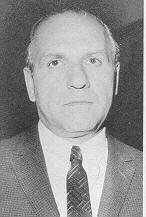
(Anthony Giacalone)
Well, according to sources the FBI checked up on the exact whereabouts of the men Hoffa was supposed to meet that day, Anthony Giacalone and Anthony Provenzano, both of which being able to provide alibis. Giacalone for example was at a local gym where he spent at least some time every single day, and Provenzano was said to be in New Jersey. Both claiming that they had no idea they were supposed to have lunch with Hoffa at the time he disappeared.
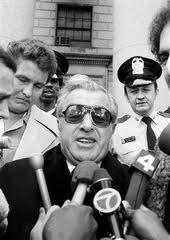
(Anthony Provenzano)
Another character of suspicion was Charles 'Chuckie' O’Brien, someone who knew Hoffa very well, and who was, at the time of Hoffa's disappearance, said to have been lending the car that Hoffa was last seen in - lending it from Joe Giacalone, the son of Mobster Anthony Giacalone who was supposed to meet Hoffa in the first place, but claiming otherwise. O'Brien being someone Hoffa knew well It's not out of the question to suggest he was meeting Hoffa that day, if this report is true of course.
Here's an interesting source discussing this issue:
(Source)
Chuckie O’Brien claimed that he hadn’t seen Hoffa on July 30 and gave a detailed account of his whereabouts. He told investigators that he had delivered a 40-pound frozen salmon to the home of a Teamster International vice president and helped the man’s wife cut the fish into steaks. During the time that Jimmy Hoffa had been waiting at the restaurant, O’Brien said he was at the Southfield Athletic Club with Anthony Giacalone. O’Brien claimed he then took the Mercury to a car wash because fish blood had leaked onto the backseat. No one at the athletic club or the car wash could corroborate his story.
Specially trained German shepherds were flown in from Philadelphia eight days after Hoffa’s disappearance. The dogs were given a pair of the labor leader’s Bermuda shorts and a pair of his moccasins. They picked up Hoffa’s scent in the backseat and trunk of Joe Giacalone’s maroon Mercury. Twenty-six years later in March of 2001, a DNA match was made between a hair found in the back of the car and a hair taken from Hoffa’s hairbrush.
After some research, particularly on Anthony “Tony Pro” Provenzano for example, some interesting anomalies can be found, ones which can potentially, in my opinion, provide an answer for how Jimmy Hoffa really did die - you see when Hoffa was sent to prison for Illegal activities while President of the Teamsters a mobster he knew very well was also serving time.. this mobster was Provenzano himself. While in prison, again this according to the sources I can find, they bonded more and because quite good friends... although it didn't last long.
(Source)
In prison Hoffa and Provenzano were initially close allies. Provenzano was a de facto power within Lewisburg, carrying his mob rank with him, and he provided Hoffa with protection. At one point, Provenzano was paralyzed with a painful stomach ailment, and it was Hoffa who raised hell on his behalf, convincing prison officials to get Provenzano the medical attention he required. But over time their relationship deteriorated. Provenzano wanted Hoffa’s help in securing a loan from the Teamsters for a restaurant he wanted to open, but Hoffa couldn’t deliver for him. Provenzano was upset over this, and later Hoffa was overheard telling Provenzano, “It’s because of people like you that I got into trouble in the first place.”
Their friendship together was all but over, both of them even coming to blows in an airport after being released from prison as claimed In the book 'Desperate Bargain: Why Jimmy Hoffa Had to Die authored by Lester Velie, "Hoffa and Provenzano went at it with their fists, and Hoffa broke a bottle over Provenzano’s head.” Provenzano angrily threatened Hoffa’s grandchildren, swearing “I’ll tear your heart out!"
Provenzano however, was one dangerous character and is said to have been responsible for numerous contract killings in his lifetime. All of which, perhaps coincidentally, occurring in a manner not dissimilar to the way in which Jimmy Hoffa himself disappeared and is said to have died. This potentially providing a glimmer of hope for finding an answer to who killed Jimmy Hoffa, or at the very least who may have been involved - Anthony Provenzano.
(Source)
In 1963 a prosecution witness in Provenzano’s extortion trial was gunned down shortly before he was scheduled to give testimony. In 1972 a man involved in a counterfeiting operation with Provenzano simply disappeared. In a case uncannily similar to the Hoffa disappearance, Anthony Castellito, the secretary-treasurer of Provenzano’s Local 560, was lured to a location in upstate New York where he was met by a short, slight, and bespectacled loanshark named Salvatore “Sally Bugs” Briguglio who allegedly murdered Castellito and transported the body back to New Jersey. Castellito’s remains were never found. Conveniently Provenzano was in Florida at the time of Castellito’s disappearance. The setup was nearly identical to Hoffa’s disappearance. When Provenzano returned to the Garden State, he appointed Briguglio, who previously had no official connection to the Teamsters, to the victim’s former position as secretary-treasurer of Local 560.
In 1985 the FBI released a memo summarizing the Hoffa case and cited Salvatore Briguglio as a prime suspect along with Briguglio’s brother Gabriel, the brothers Stephen and Thomas Andretta, Chuckie O’Brien, “Tony Pro” Provenzano, “Tony Jack” Giacalone, and the mob boss of western Pennsylvania, Russell Bufalino.
So was this how Jimmy Hoffa really died? He was set up by Anthony Giacalone and Anthony Provenzano, both men who had a motive and both men were well known to be working in Organized crime. Giacalone then asked his son to lend the car to someone who knew Hoffa extremely well, and I believe would benefit from his death - the lending of the car from Joe Giacalone, the son of Anthony Giacalone, to Charles 'Chuckie' O’Brien who would then transport Hoffa to an unknown location where he would meet his fate? Well, It's very possible, IMO. But that's not all...
Ralph Picardo's Alleged Confession
Interestingly enough, Ralph 'Little Ralphie' Picardo, may provide some answers to the questions I still have about this case. He was an ex-driver for Anthony Provenzano, now turned informer and was serving in Trenton State Prison in New Jersey at the time where he decided to reveal what he knew about the case. And if true then he certainly knew a lot.
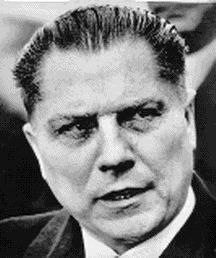
(Source)
As reported in The Hoffa Wars by Dan E. Moldea, Picardo claimed that Hoffa had been invited to the Machus Red Fox restaurant by Detroit mobster Anthony Giacalone for a “sit-down” with Provenzano, so that the two men could iron out their differences. Chuckie O’Brien, whose alibi included spending time carving a large fish that day, picked up Hoffa at the restaurant and took him to a nearby house where O’Brien had been staying with friends. Teamster business agent Thomas Andretta, Salvatore Briguglio and his brother Gabriel were in the house, waiting to ambush Hoffa. A man named Frank Sheeran, who had been president of Local 326 in Delaware, was also in the house. Sheeran was a close associate of Pennsylvania mob boss Russell Bufalino and had driven Bufalino to Detroit that day. According to Picardo, the hit on Hoffa was ordered by Bufalino who gave the contract to Provenzano. Bufalino’s cousin William, president of the Teamsters’ jukebox local in Detroit, had had a serious falling out with Hoffa in 1967.
Picardo did not say whether Russell Bufalino was actually present for Hoffa’s execution, but it is curious that on a day when others involved in the conspiracy made sure that they were nowhere in the vicinity, Bufalino traveled from his base in Pittston, Pennsylvania, to be in the same city. Perhaps Bufalino wanted to make sure that the pesky Hoffa was taken care of once and for all. Or perhaps it was personal, and he wanted to witness the event himself. Bufalino’s exact whereabouts on July 30, 1975, are unknown, but there is little doubt that Hoffa was murdered that day in that house.
And looking at past cases involving Provenzano for example, we already know that bodies generally aren't found ever again. One of his victims, I believe, was even thrown into a wood chipper and then further disposed of. Others disappearing never to be found again.. like Hoffa.
Now, as I come to the end of this thread on what I would consider to be a fascinating topic, I do have to ask, in the hope of finding an answer to one of the most mysterious cases of disappearances of the last century, were the key players involved in the murder of Jimmy Hoffa none other than Anthony “Tony Jack” Giacalone, New Jersey labor leader Anthony “Tony Pro” Provenzano, Joe Giacalone, Charles “Chuckie” O’Brien, Salvatore “Sally Bugs” Briguglio, Gabriel Briguglio, Stephen Andretta and Thomas Andretta? - These being just the names we know and all of them have been discussed in this thread so far.
Well, I'll leave you to make up your own mind but if anyone else has ever taken the time to research this case I'd certainly love to hear a response, particularly from those with theories of their own. Like I said I find this to be a fascinating case and the theory I've discussed in this thread seems like, to me, the best at explaining what really happened to Jimmy Hoffa.
Thanks to those who also took the time to read this full thread, It's much appreciated and I'd love to hear your thoughts.
edit on
21-11-2011 by Rising Against because: Found a mistake.
reply to post by Rising Against
sorry --going to work soon--
Jimmy, was at Machus Red fox, in Birmingham mich.. that SAME day we we're a few restaurants down the street.
A few days AFTER he went "missing" my dad said that HE heard.. from his "buddys" (yeah,,i know ,,,)
.that Jimmy was put into Concrete at the Pontiac Silverdome ,,..(just down the road--Woodward ave- about 7 miles)
and that NOBODY would EVER find him..!!!
but that's just the story-- i was young at the time.. and That is what i remember..
***sorry for posting before you finished..***
BTW Great work!!!! great read!! S&F
sorry --going to work soon--
Jimmy, was at Machus Red fox, in Birmingham mich.. that SAME day we we're a few restaurants down the street.
A few days AFTER he went "missing" my dad said that HE heard.. from his "buddys" (yeah,,i know ,,,)
.that Jimmy was put into Concrete at the Pontiac Silverdome ,,..(just down the road--Woodward ave- about 7 miles)
and that NOBODY would EVER find him..!!!
but that's just the story-- i was young at the time.. and That is what i remember..
***sorry for posting before you finished..***
edit on 11/21/11 by darrman because: spellenglish
BTW Great work!!!! great read!! S&F
edit on 11/21/11 by darrman because: add a thingy
The book "The Iceman", about the psychopathic killer and sometime hit man for the Mob, Richard Kuklinski, claimed to have killed Jimmy Hoffa. He and
four other mobsters apparently did the job. Kuklinski claimed that he knocked him unconscious before stabbing him in the head. He then stated that he
drove the body to a wrecker in New Jersey where he had the car crushed and sold as scrap metal...
That is what Kuklinski had claimed... As to weather or not it is true, is up for debate...
That is what Kuklinski had claimed... As to weather or not it is true, is up for debate...
Being from Michigan ole Jimmy is a gift that keeps on giving. He definately ticked somebody off but to me it would be wonderful to have a pre or post
death admission to where or if his remains can be foundjust so we can have a new round of stories and jokes. Michigan can be a tough place one deer
season 30 years ago a guy killed 2 hunters and ran them thru a wood chipper into his pigs pens just because a waitress seem to take a liking to them.
It took 25 years to convict that guy because all the locals were afraid
reply to post by 001ggg100
Stabbed in the head? gotta have some hefty upper-body strength to pull that one off. Then leave the body in a car that gets crushed and sold as scrap?
Well, I guess DNA testing wasn't around back then, who knows.
Seems kinda sloppy to me though.
Organized crime tends to kill in two methods:
1. right in the open, in their car, in the street, in their favorite restaurant
2. silently, you'll never be sure they are dead, you'll never find a body.
In fact, in Nova Scotia, not that far from where i live in NB, there was a place the mob used to come to dispose of bodies.
I'd love to find a link on it, I remember my grandfather joking about Hoffa being up there somewhere in the woods.
Kuklinski claimed that he knocked him unconscious before stabbing him in the head. He then stated that he drove the body to a wrecker in New Jersey where he had the car crushed and sold as scrap metal... That is what Kuklinski had claimed... As to weather or not it is true, is up for debate...
Stabbed in the head? gotta have some hefty upper-body strength to pull that one off. Then leave the body in a car that gets crushed and sold as scrap?
Well, I guess DNA testing wasn't around back then, who knows.
Seems kinda sloppy to me though.
Organized crime tends to kill in two methods:
1. right in the open, in their car, in the street, in their favorite restaurant
2. silently, you'll never be sure they are dead, you'll never find a body.
In fact, in Nova Scotia, not that far from where i live in NB, there was a place the mob used to come to dispose of bodies.
I'd love to find a link on it, I remember my grandfather joking about Hoffa being up there somewhere in the woods.
reply to post by darrman
Oh It's fine, I didn't have to split up each post into the 5000 character limits. I realized that if you hit reply, and then click on edit then there's no limit or anything so I decided to just split the thread up into just 2 posts instead of around 5 or 6 like it would be with the limits. I think the thread is that bit easier to read this way.
Anyway thanks for your post, that's actually very fascinating to say the least and sometimes truth (or clues leading to truth) can certainly be found in those kinds of stories, especially so close to the incident. Out of curiosity though could you ever ask around for more information on this at all? I ask as there may have been someone who was a bit older than you was then and thus might be able to recall more details.
I'm going to do a bit of searching for any connections to Hoffa and woodward avenue as well, who knows maybe it was investigated (from the looks of it there was a pretty big police hunt for his body after all).
Thanks for your reply once again and I starred you also. I can tell you thought this was important to share.
***sorry for posting before you finished..***
Oh It's fine, I didn't have to split up each post into the 5000 character limits. I realized that if you hit reply, and then click on edit then there's no limit or anything so I decided to just split the thread up into just 2 posts instead of around 5 or 6 like it would be with the limits. I think the thread is that bit easier to read this way.
Anyway thanks for your post, that's actually very fascinating to say the least and sometimes truth (or clues leading to truth) can certainly be found in those kinds of stories, especially so close to the incident. Out of curiosity though could you ever ask around for more information on this at all? I ask as there may have been someone who was a bit older than you was then and thus might be able to recall more details.
I'm going to do a bit of searching for any connections to Hoffa and woodward avenue as well, who knows maybe it was investigated (from the looks of it there was a pretty big police hunt for his body after all).
Thanks for your reply once again and I starred you also. I can tell you thought this was important to share.
reply to post by darrman
I've heard similar stories except that supposedly Hoffa's body buried in concrete in East Rutherford (Giants Stadium).
I've heard similar stories except that supposedly Hoffa's body buried in concrete in East Rutherford (Giants Stadium).
reply to post by Rising Against
RA, you are a good writer....you weave well in the discourse. I think you probably could make a living at it. Thx
OT
RA, you are a good writer....you weave well in the discourse. I think you probably could make a living at it. Thx
OT
Originally posted by hp1229
reply to post by darrman
I've heard similar stories except that supposedly Hoffa's body buried in concrete in East Rutherford (Giants Stadium).
Yeah, I've heard that too and I briefly mentioned it in my opening posts.
Admittedly I really can't see it being anything more than myth though. But hey, I've been wrong before and if someone can prove that traces of him were found there.. great. But I just don't think anyone ever will. If he's anywhere, It's very unlikely to be at giants stadium.
edit on
21-11-2011 by Rising Against because: (no reason given)
another intresting read RA well put together and gives a lot of food for thought
I sincerely love to read your posts as they are so well laid out, not to mention interesting!! This mystery has always made me wonder as well. Not
hard to think that back in those days, with no DNA evidence collection, that people could disappear very easily. Great post!!
Originally posted by ronishia
another intresting read RA well put together and gives a lot of food for thought
Thanks for replying Roni.
Hopefully more do the same, I'd love to see a good debate come out of this thread.
reply to post by Menrva
Oh from what I've read, it was veeeery easy to do indeed, lol.
Take Anthony “Tony Pro” Provenzano, the man I highlighted in my opening posts, as an example. It seems as though he knew exactly how to get rid of individuals (perhaps even Hoffa) and leave very little trace:
I'm sure there are many others cases of sudden disappearance also, particularly involving those on trial who are looking to put away the all too elusive mobsters of the time...
Not hard to think that back in those days, with no DNA evidence collection, that people could disappear very easily. Great post!!
Oh from what I've read, it was veeeery easy to do indeed, lol.
Take Anthony “Tony Pro” Provenzano, the man I highlighted in my opening posts, as an example. It seems as though he knew exactly how to get rid of individuals (perhaps even Hoffa) and leave very little trace:
(Source can be found in the opening posts.)
In 1963 a prosecution witness in Provenzano’s extortion trial was gunned down shortly before he was scheduled to give testimony. In 1972 a man involved in a counterfeiting operation with Provenzano simply disappeared. In a case uncannily similar to the Hoffa disappearance, Anthony Castellito, the secretary-treasurer of Provenzano’s Local 560, was lured to a location in upstate New York where he was met by a short, slight, and bespectacled loanshark named Salvatore “Sally Bugs” Briguglio who allegedly murdered Castellito and transported the body back to New Jersey. Castellito’s remains were never found. Conveniently Provenzano was in Florida at the time of Castellito’s disappearance. The setup was nearly identical to Hoffa’s disappearance. When Provenzano returned to the Garden State, he appointed Briguglio, who previously had no official connection to the Teamsters, to the victim’s former position as secretary-treasurer of Local 560.
In 1985 the FBI released a memo summarizing the Hoffa case and cited Salvatore Briguglio as a prime suspect along with Briguglio’s brother Gabriel, the brothers Stephen and Thomas Andretta, Chuckie O’Brien, “Tony Pro” Provenzano, “Tony Jack” Giacalone, and the mob boss of western Pennsylvania, Russell Bufalino.
I'm sure there are many others cases of sudden disappearance also, particularly involving those on trial who are looking to put away the all too elusive mobsters of the time...
My aunt married Hoffa's nephew about 30 years ago; he or his father (Hoffa's brother) did not believe that he was dead. They refused to speak about
it much because of all of the heat on the family after the disappearance.
reply to post by phishyblankwaters
The claim was that Hoffa was stabbed with an icepick in the base of the skull, a well known method of mob assassination. Then, the body was placed in the trunk of a car and compacted at a mob owned scrap yard. Finally, the scrap metal was sold to Japan for use in the Toyotas and Datsuns that were coming into North America at the time.
This according to Kuklinski.
I believe they used ground penetrating radar in Giants Stadium (the rumor was Hoffa was sealed in a steel barrel and buried in the end zone) and came up empty.
The claim was that Hoffa was stabbed with an icepick in the base of the skull, a well known method of mob assassination. Then, the body was placed in the trunk of a car and compacted at a mob owned scrap yard. Finally, the scrap metal was sold to Japan for use in the Toyotas and Datsuns that were coming into North America at the time.
This according to Kuklinski.
I believe they used ground penetrating radar in Giants Stadium (the rumor was Hoffa was sealed in a steel barrel and buried in the end zone) and came up empty.
edit on 21-11-2011 by TheComte because: (no reason given)
I heard that Hoffa was forced to eat himself and was later sold as "giant haggis".
But seriously, I have nothing to offer in the way of answers here, as I imagine most of ATS do.
However, many thanks to Rising Above for another informative and interesting post.
But seriously, I have nothing to offer in the way of answers here, as I imagine most of ATS do.
However, many thanks to Rising Above for another informative and interesting post.
Originally posted by Rising Against
Originally posted by hp1229
reply to post by darrman
I've heard similar stories except that supposedly Hoffa's body buried in concrete in East Rutherford (Giants Stadium).
Yeah, I've heard that too and I briefly mentioned it in my opening posts.
Admittedly I really can't see it being anything more than myth though. But hey, I've been wrong before and if someone can prove that traces of him were found there.. great. But I just don't think anyone ever will. If he's anywhere, It's very unlikely to be at giants stadium.edit on 21-11-2011 by Rising Against because: (no reason given)
When they tore down the old Giants Stadium a couple years ago, they used ground-penetrating-radar to check out the end zones - didn't find anything.
reply to post by Rising Against
Love your threads. Good job. Nothing like hi profile murder / assassinations or disappearances to perk my interest.
Someone else here said what I thought. The teamsters owned auto wrecking yards, salvage yards and the like. i think one or two was located nearby the restaurant. They killed him, put him in the trunk, drove him to the wrecking yard. Transferred his body to a barrel and put it in another car, crushed it to the size of a small refrigerator and sent it to the smelters. The reason there is no trace of his body is because it got melted and put up a smoke stack.
Were breathing him.
Love your threads. Good job. Nothing like hi profile murder / assassinations or disappearances to perk my interest.
Someone else here said what I thought. The teamsters owned auto wrecking yards, salvage yards and the like. i think one or two was located nearby the restaurant. They killed him, put him in the trunk, drove him to the wrecking yard. Transferred his body to a barrel and put it in another car, crushed it to the size of a small refrigerator and sent it to the smelters. The reason there is no trace of his body is because it got melted and put up a smoke stack.
Were breathing him.
new topics
-
Traveling the world with no passport
Social Issues and Civil Unrest: 3 hours ago -
Happy Thanksgiving to ATS
General Chit Chat: 6 hours ago
top topics
-
Mind Blowing Cave under someones land
Fragile Earth: 17 hours ago, 17 flags -
Simple Thanksgiving
Food and Cooking: 13 hours ago, 15 flags -
Trump Presidential Transition Team will not use GSA or Government entities to come to DC
US Political Madness: 16 hours ago, 14 flags -
Trump could make a peaceful American Revolution
US Political Madness: 16 hours ago, 14 flags -
Happy Thanksgiving to ATS
General Chit Chat: 6 hours ago, 6 flags -
Traveling the world with no passport
Social Issues and Civil Unrest: 3 hours ago, 5 flags
active topics
-
Traveling the world with no passport
Social Issues and Civil Unrest • 3 • : covent -
Mind Blowing Cave under someones land
Fragile Earth • 19 • : CosmicFocus -
Simple Thanksgiving
Food and Cooking • 28 • : yeahright -
Petition Calling for General Election at 564,016 and rising Fast
Political Issues • 107 • : gortex -
I thought Trump was the existential threat?
World War Three • 116 • : andy06shake -
Well, here we go red lines crossed Biden gives the go ahead to use long range missiles
World War Three • 402 • : andy06shake -
D.B. Cooper mystery may be solved
General Conspiracies • 22 • : andy06shake -
Happy Thanksgiving to ATS
General Chit Chat • 4 • : VariedcodeSole -
Post A Funny (T&C Friendly) Pic Part IV: The LOL awakens!
General Chit Chat • 7840 • : GENERAL EYES -
Trump Presidential Transition Team will not use GSA or Government entities to come to DC
US Political Madness • 14 • : WeMustCare
